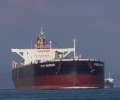Sluggish Asia-Pacific light sweet condensate sentiment looms over Oct-loading cycle

Cash differentials for the Asia-Pacific regional light sweet condensates remain under pressure amid weakening naphtha and gasoline cracks as the bearish sentiment spills over into the October-trading cycle, market sources told S&P Global Commodity Insights in the week of Aug. 8.
There will be two 650,000-barrel cargoes of Australia’s North West Shelf condensate available in the new October-loading trading cycle, down from three cargoes on the month.
Shell will hold one cargo for Oct. 10-14 loading while Australia’s Woodside Energy will hold the other for Oct. 22-26 loading, traders said.
The sentiment for the regional light sweet condensates, however, has remained bearish despite the shorter loading program.
“One [NWS] cargo less [on the month] but doubt that it helps to support the market. Past few cycles have been clearing [overhang] cargoes and [the] petrochemicals market [is] not exactly recovering,” said a Singapore-based condensate trader.
“Just one cargo short, [it is] not enough to buffer [the bearish market] sentiment,” said a regional condensate trader.
The production of NWS has been constant, hence supply-side fundamentals may only have limited support on the condensate prices, according to another Singapore-based condensate trader.
Weakening naphtha and gasoline cracks have further dampened the sentiment and limited any potential upside in condensate differentials.
“I think [the] naphtha crack is weighing heavily on the [condensate] complex,” said a crude oil trader.
“Market sounds quite bearish with a number of overhang barrels as well,” said another Singapore-based condensate trader.
The Platts second-month Singapore naphtha and gasoline cracks versus Dubai crude swap averaged minus $16.37/b and $10.05/b in August to date, down from minus $14.25/b and $17.55/b in July, respectively, S&P Global data showed.
On the demand front, Indonesia’s Pertamina, which purchases on behalf of PT Trans-Pacific Petrochemical Indotama, does not have further requirements to buy condensate cargoes in the October-loading cycle, traders said.
This means a demand-supply imbalance in the Asia-Pacific regional condensate market could send cash differentials further south, according to traders.
Most recently, September-loading barrels of NWS changed hands at double-digit discounts to Dated Brent, FOB, a reflection of dull market fundamentals.
Fresh condensate buying activity from China’s Fuhaichuang, formerly known as Dragon Aromatics, was too muted at the moment.
“Not certain if there’s any condensate demand for the October-loading cycle, there was no demand for September delivery [barrels],” said a China-based crude oil trader.
Naphtha sentiment bearish
Naphtha prices have been falling in Asia due to poor demand for olefins, although there is still visible demand for heavy full-range naphtha in north Asia on healthy margins to produce aromatics.
The naphtha grade typically competes with condensates as a feedstock for many northeast Asian splitter operators.
Demand for steam cracker-feed naphtha was weak due to poor demand for plastic derivatives, specifically from one of Asia’s largest consumers of plastics, China.
The key spread between CFR Northeast Asia ethylene and CFR Japan naphtha physical was at $160.25/mt at the Aug. 10 Asia close, widening $7/mt week on week, S&P Global data showed.
However, the typical breakeven spread for non-integrated producers was $350/mt and for integrated producers was $250/mt, according to market sources, showing that current margins were unsustainable for steam crackers to produce olefins.
Domestic demand for olefins in China, South Korea and Taiwan has remained weak due to slowing economic growth and while steam crackers look to export their output, high freight rates and poor global demand have prevented them from doing so, sources said.
As a result, demand for spot naphtha for the current first-half October delivery cycle was muted, with no buying yet seen from naphtha-fed steam crackers. However, supply was tight for splitter-feed naphtha grades such as heavy full-range naphtha due to the lack of Russian naphtha cargoes.
Additionally, aromatics margins were healthy, with the key paraxylene-naphtha spread above the typical $280-$300/mt mark, making it attractive for splitters to continue producing.
The Platts paraxylene CFR Taiwan/China to C+F Japan naphtha cargo spread was assessed at $369.58/mt at the Aug. 10 Asian close, S&P Global data showed, widening $33/mt on the week primarily on falling naphtha prices. The spread had hit an all-time high of $684.83/mt on June 8.
Source: Platts

 Hellenic Shipping News Worldwide Hellenic Shipping News Worldwide, Online Daily Newspaper on Hellenic and International Shipping
Hellenic Shipping News Worldwide Hellenic Shipping News Worldwide, Online Daily Newspaper on Hellenic and International Shipping






















 PG-Software
PG-Software